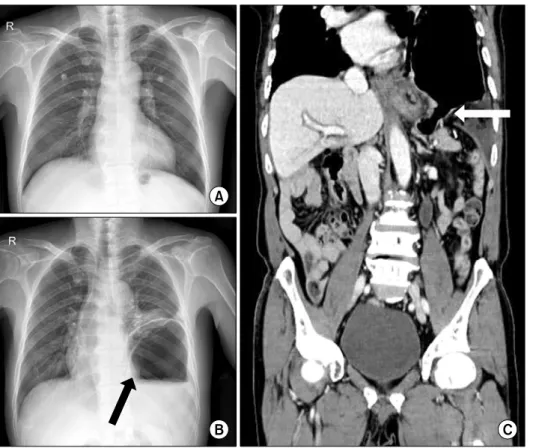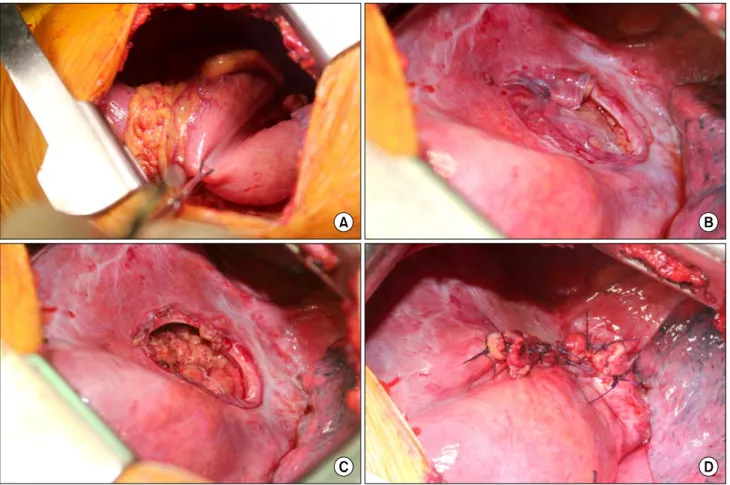Korean J Thorac Cardiovasc Surg 2013;46:230-233 □ Case Report □ http://dx.doi.org/10.5090/kjtcs.2013.46.3.230 ISSN: 2233-601X (Print) ISSN: 2093-6516 (Online)
− 230 −
Department of Thoracic and Cardiovascular Surgery, Jeju National University Hospital, Jeju National University School of Medicine
†This article was presented at the 44th Autumn Scientific Meeting of The Korean Society for Thoracic and Cardiovascular Surgery.
Received: November 6, 2012, Revised: December 17, 2012, Accepted: December 18, 2012
Corresponding author: Seogjae Lee, Department of Thoracic and Cardiovascular Surgery, Jeju National University Hospital, Jeju National University School of Medicine, 15 Aran 13-gil, Jeju 690-767, Korea
(Tel) 82-64-717-2081 (Fax) 82-64-757-8276 (E-mail) sj1106@jejunu.ac.kr
C
The Korean Society for Thoracic and Cardiovascular Surgery. 2013. All right reserved.
CC

